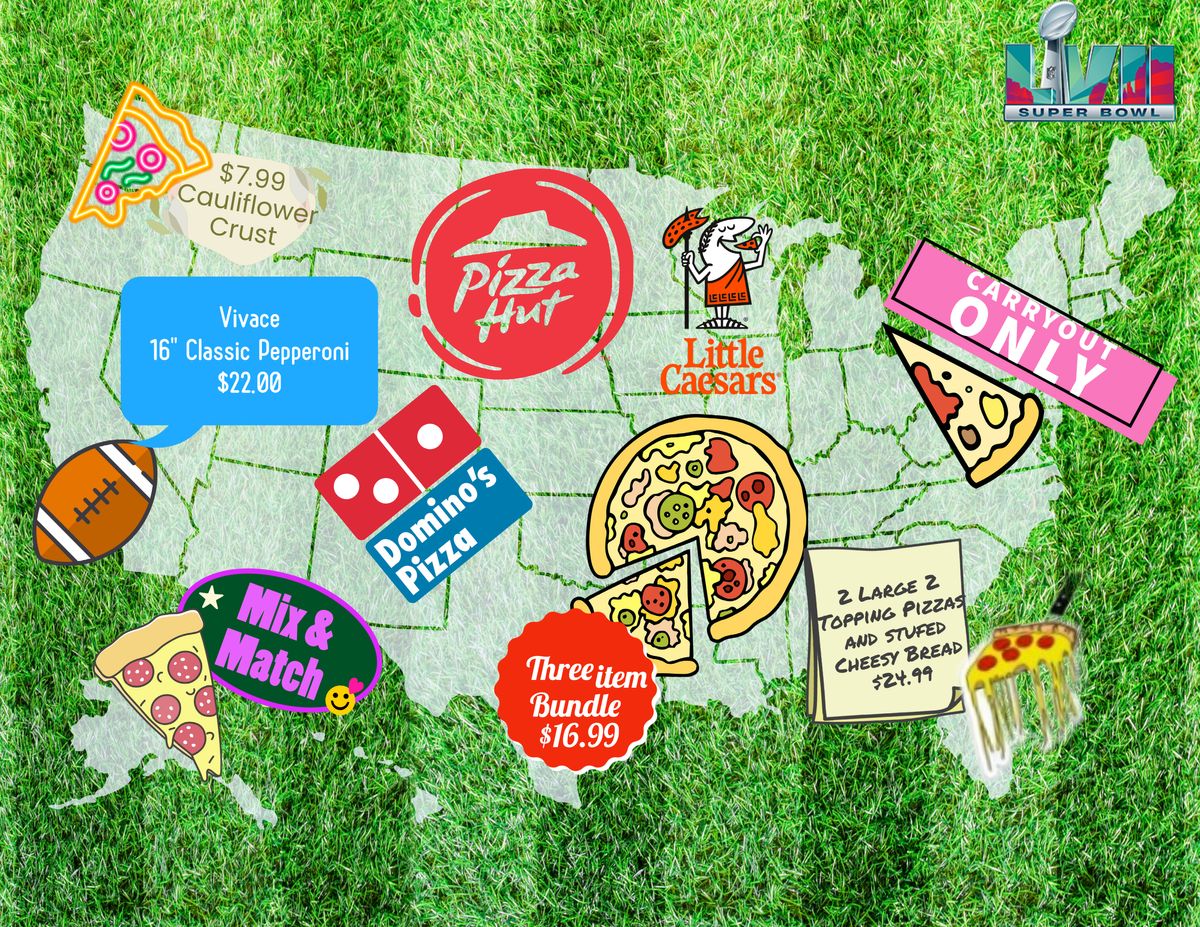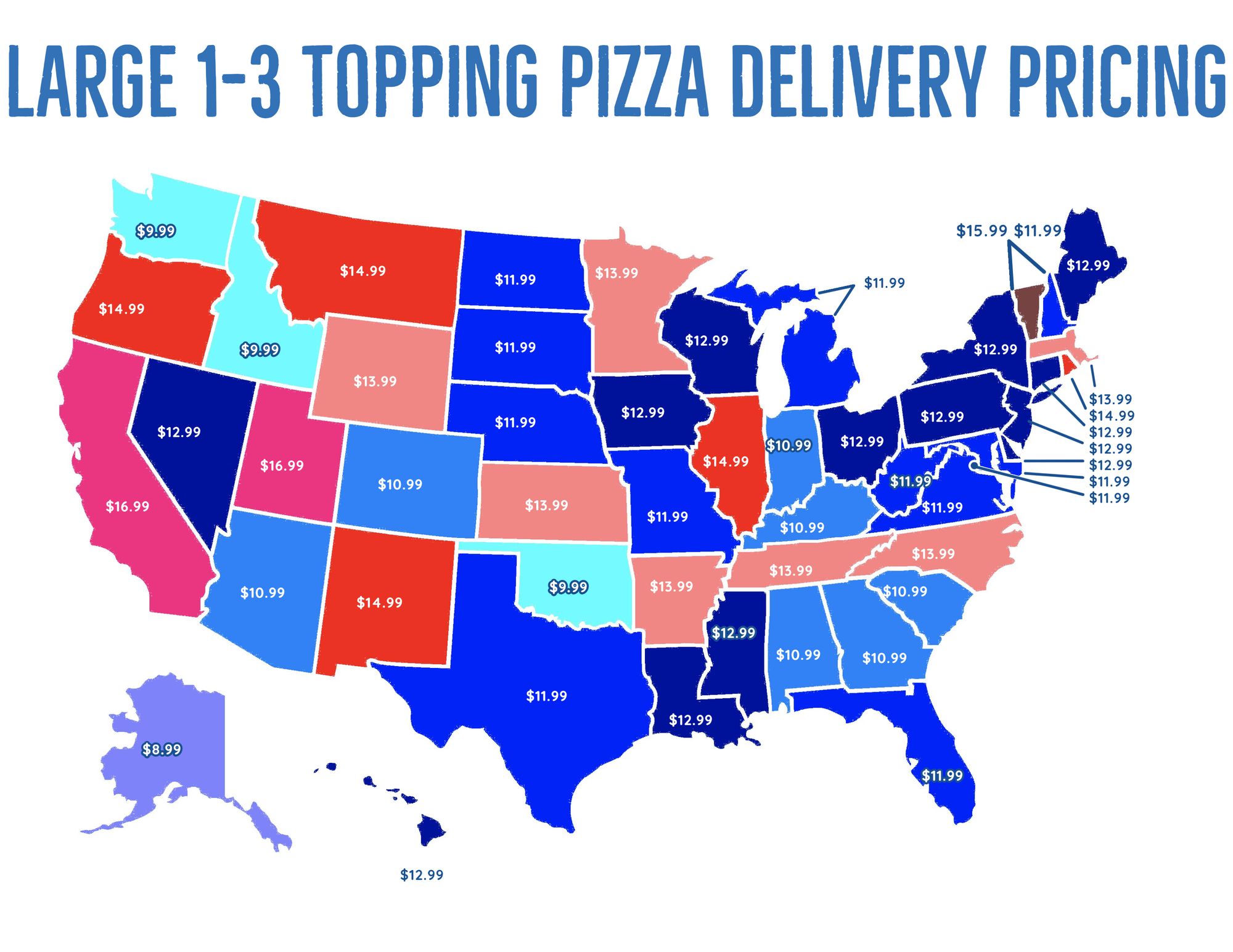PizzaBowl - A Playbook to Defeat Inflation

The biggest battle this Super Bowl Sunday won’t involve the Eagles and Chiefs. Instead it will be a fierce competition between the nation's largest pizza chains in a race to secure the highest number of orders, brand dominance and digital presence, with a recent change in possession epitomizing the moment.
With inflation at its highest level in 40 years, and the cost this past year of at-home food already up by 11.8%, those organizing Superbowl Parties have to be more mindful than ever to get the most value out of their event. Consumer spending is already tightening with a noticeable reduction in the personal savings rate. Food brands will have to become more innovative in their marketing strategies, employing psychology, bundling tactics, and promotions to increase pick up orders.
Small-town pizzerias are struggling on the sidelines
Local Pizza shops have been getting hit harder than ever both from a Cost of Goods Sold perspective and increased labor prices. As you can see below, popular Bay area pizza locations have seen significant price increases (from $2.50 to $5.00 per slice). Redditors have also slammed these increases asking Why is pizza so expensive? and questioning if their sauce and topping volume has decreased.

Recent data from menus show that local LA pizzerias are now charging between $22 and $38: this is more than double what major pizza chains charge for a large One topping pepperoni pizza.

A touchdown-worthy pricing playbook
Last March, Domino's CEO Russell Weiner announced that the price of its Mix & Match Deal menu for delivery had increased from $5.99 to $6.99. Despite the change, the menu still offered good value, according to Weiner (Restaurant Dive).
While the price increase seems small, the psychological impact to the consumer is an example of the Weber-Fechner law of pricing - the perceived value of a product is not directly proportional to its price. In this example a $1 dollar increase will be viewed not in absolute terms, but relative to other prices of previous purchases from Domino's or other chains.
Homepage Deals
A quick scan of leading pizza company websites shows some interesting ideas at play. Once known for their extreme value $5 Hot and Ready, Little Caesars converged to the $6.99 price point. Pizza Hut, known for slightly higher pricing, also joined the $6.99 club, but for a 'Melt' instead of a 'pizza'. When viewing these deals, a potential customer is initially drawn to these low prices, a strategy known as the "anchoring effect".

When a customer sees a lower-priced pizza on a menu, they may perceive a higher-priced pizza as a better value or deal, even if it is still relatively expensive compared to other options. This strategy is often used by restaurants and marketers to influence customers' purchasing decisions by strategically placing lower-priced items on menus or in advertisements.
Geographical Pricing
Dominos and similar pizza chains utilize geographical pricing to adapt to varying market conditions and consumer preferences across regions. By considering factors such as income, operating costs, competition, and cost of living, they set prices that match local demand and affordability.

Navigating through all the different promotions offered nationwide and state-to-state, the lowest price for one individual 1 topping large varies significantly. Enjoying the same pizza in California ($16.99) will cost you almost twice as much as in states like Idaho, Oklahoma, Washington ($9.99).
Bundling & Carryout

Our analysis revealed 58 distinct promotions across the United States. It's also interesting to note the inclusion of 'Gluten Free' promotions which may be an area of future growth.
While looking deeper at Price Bundling, experts at Simon-Kucher & Partner bring up a few key takeaways:
- Segmenting customers based on their willingness to pay for products.
- By utilizing mixed bundling, where products are sold both individually and as part of a bundle, maximum revenue will be higher than without bundling.
In addition to the varying price, some states even offer carryout only deals. This coincides with Domino's recent $3 self-tipping campaign that encourages customers to come into the store to "be their own delivery drivers". As the company navigates staffing and driver shortages, the self-tip promotion is an effective tactic to incentivize customers to remain loyal amidst inflation.
Conclusion
With 'Food Inflation' being increasingly persistent and consumer spending tightening, both Pizza Chains and Independent Pizzerias will need to be increasingly nimble with their marketing strategy and efforts. By employing a variety of pricing tactics including the "anchoring effect", "geographic pricing", "digital only offers", "bundling" and "carry out offers", large chains have created an effective playbook to combat inflation. With the rise of customer loyalty programs, delivery applications and smart POS systems, it will be intriguing to see if local restaurants can adopt some of these innovative pricing strategies in order to stay competitive and bring more sales to the endzone.
Special thanks to ChatGPT for content/research, Lino Fabiani for edits
Visit www.menudata.io for more insights into Food & Beverage trends